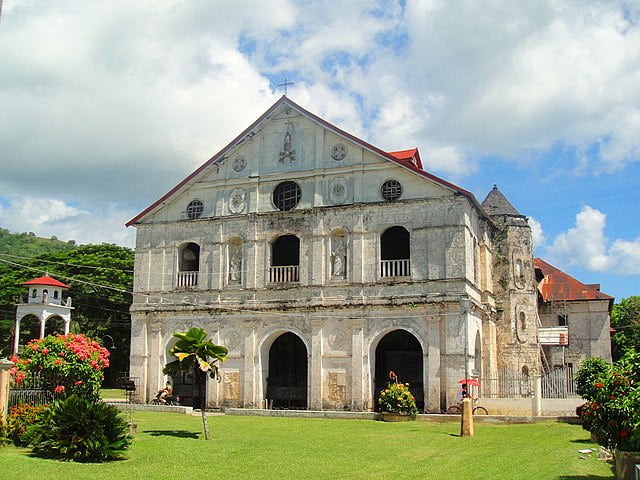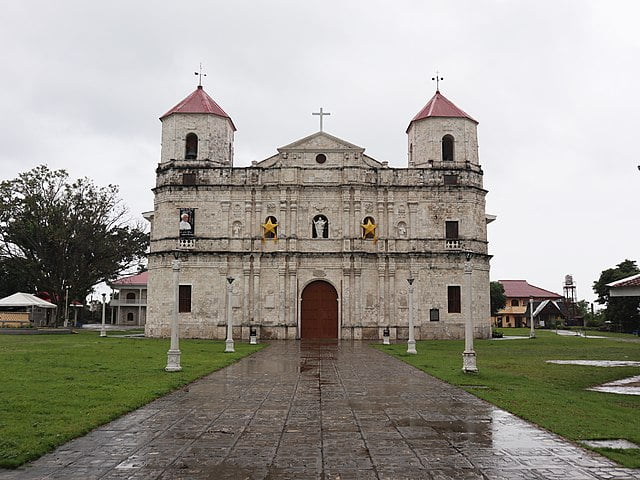Visayas is home to some of the Philippines’ most beautiful and historically significant churches. These structures serve as worship places and cultural landmarks that witness the country’s rich history and traditions. So if you’re a history buff or love exploring architectural wonders, you’ll want to check out the oldest churches in the Visayas.
Each has a unique story, from the stunning Baroque-style churches of Iloilo to the centuries-old stone structures of Bohol. Join us as we remember and discover the fascinating history behind some of the Visayas’ oldest and most beautiful churches. Whether you’re a visitor or a local, these churches are worth a visit!
Tours and activities: Reserve now and pay later.
Oldest Churches in the Visayas: Basilica Menor del Santo Niño de Cebu (Cebu City)

The list of colonial-era Visayan churches would be incomplete without mentioning the first-ever Catholic church in the Philippines. Established in 1565 by Augustinian friars, this basilica has a remarkable history dating back to its humble beginnings. According to legend, Miguel Lopez de Legazpi and his crew discovered the image of Santo Niño on the site where they built the church.
The Magellan expedition gifted this icon to the then-ruler of Cebu, Humabon, almost 40 years before its discovery. They later replaced the original wood and nipa church with a stone building in 1740. Despite numerous challenges, such as fires, earthquakes, and typhoons, the Sto. Niño Basilica stands tall as a symbol of faith and pride for many Cebuano Catholics.
Save on Travel with Trip.com (ENG)
Our Lady of Patronage of Mary Parish Church (Boljoon, Cebu)

As you journey a bit further south from the bustling city center of Cebu, you’ll find yourself transported to a bygone era. Boljoon’s Our Lady of Patronage of Mary church, located on a vast parish property, is a quaint structure with a fascinating past. In its heyday, this religious site served as a sanctuary and a stronghold. The thick walls made of mortar and lime provided a haven for parishioners during pirate attacks.
Even today, the church complex still echoes the remnants of its intriguing and intense history, from the bell tower’s ground floor, which likely served as a prison cell for captured pirates, to the quadrangular blockhouse used for artillery storage.
San Fernando Rey Parish Church (Liloan, Cebu)

The San Fernando Rey Parish Church in Liloan, located in Cebu’s northern part, is a unique heritage site due to its coral stone facade and Baroque architecture, typical of Spanish-era churches. However, what differentiates it is that it faces away from the sea, although the reason for this remains unknown.
In 1845, the church broke away from the larger St. Joseph Parish in Mandaue and established itself as a wooden structure. It took 40 years, along with the efforts of skilled artisans and the importation of building materials from nearby provinces, to transform it into the magnificent sanctuary that Liloan residents know and admire today.
Oldest Churches in the Visayas: Saints Peter and Paul Parish (Bantayan, Cebu)

Bantayan is a famous resort island and holiday destination during Holy Week. However, it is also home to one of the oldest churches in Cebu, which played a crucial role in the missionary efforts in the northern part of the province.
The Bantayan Church has a rich history, from establishing a convent by the Augustinians in 1580. They built the present stone structure from 1839 to 1863 to serve as a place of worship and a fortress to protect against pirate raids, which were common then.
The Dibuho Kisame Crew intricately drew religious murals on the church ceiling, which gained attention on social media and featured in the award-winning documentary Masterpiece in 2020. Later, the parish became under the patronage of St. Peter, the patron saint of fishing communities, and the addition of St. Paul occurred in the 1980s, but it has since reverted to St. Peter.
San Agustin de Hippo Church (Bacong, Negros Oriental)

The municipality of Bacong is well-known for being the birthplace of Visayan revolutionary Leon Kilat. Additionally, it houses the remarkable San Agustin de Hippo church, built in 1864 and considered one of the noteworthy churches in the region. The church’s main altar is the oldest, and its belfry is the tallest, providing a good view of the Tañon Strait for watching out for pirates in the province of Negros Oriental.
Furthermore, the church’s choir loft houses a historic pipe organ shipped from Zaragoza, Spain, and installed in the 1890s, just before the Philippine Revolution. Astonishingly, this organ was already around when Bacong’s most famous son was born.
San Pedro Apostol Parish Church (Loboc, Bohol)

The Christianizing mission of the island has relied on the San Pedro Apostol Parish Church situated on the banks of Bohol’s famous river for over 400 years. The Jesuits founded the church, but multiple pirate raids forced them to relocate further inland.
After a fire destroyed the original wooden structure in 1638, the church rebuilt itself and constructed a larger coral stone church from 1670 to 1734. The Augustinians expelled the Jesuits from the country in 1768 and took over the parish. They made significant renovations throughout the nineteenth and twentieth centuries, including elevating the floor to address flooding concerns. These renovations are still visible today.
Santa Cruz Parish Church (Maribojoc, Bohol)

The municipality of Maribojoc in Bohol is the location of another church founded by Jesuits, situated a few kilometers north of Tagbilaran, the provincial capital. Santa Cruz Parish Church, however, has a dark past.
The authorities subjected native churchgoers to forced labor between 1798 and 1816, requiring them to carry at least four pounds of rock whenever they attended services to contribute to constructing the first church in the area. Finally, the Augustinians took over the administration of the church and built the coral stone church, which they completed in 1886.
Despite surviving wars and natural disasters, the church was ultimately destroyed by the 2013 Bohol earthquake, with only the image of the Sacred Heart of Jesus remaining intact amidst the rubble. However, in late 2021, the parish restored itself after eight years and reopened its doors to parishioners, which is remarkable. In addition, the National Museum of the Philippines declared Santa Cruz Parish a National Cultural Treasure in 2010.
Oldest Churches in the Visayas: Our Lady of Light Parish Church (Loon, Bohol)

In 1753, the Jesuits established a parish in Loon to spread the word of God in Bohol. After expelling the Jesuits, the Augustinians took over the parish previously dedicated to Our Lady of Light in 1768. Over the years, the Augustinians reinforced the church complex’s defenses and continued their religious missions.
A fire in the 1850s led to the construction of the present stone church, designed by Domingo de Escondrillas, the Director of Public Works in Cebu. Forced labor played a significant role in completing the church in 1864. In 2010, the government declared Our Lady of Light, along with several other churches in Bohol, a National Cultural Treasure.
Unfortunately, the devastating earthquake that hit the island in 2013 demolished the church. The church underwent eight years of reconstruction and reopened to parishioners in September 2021.
Final Thoughts
The ancient churches in the Philippines are a testament to its colonial history. These churches’ durable walls and elaborate altars are evidence of centuries of devotion, conflict, and loss. So it’s no surprise that as a deeply Catholic nation, the Philippines has a plethora of historic churches.
The National Historical Commission of the Philippines acknowledges all colonial churches and other pre-1940 places of worship as “Classified Historic Structures.” However, due to inadequate records, determining the exact age of the oldest church structures in the Philippines is challenging.

Pingback: Oldest Churches in Mindanao You May Like to See - Hop 'N Cruise